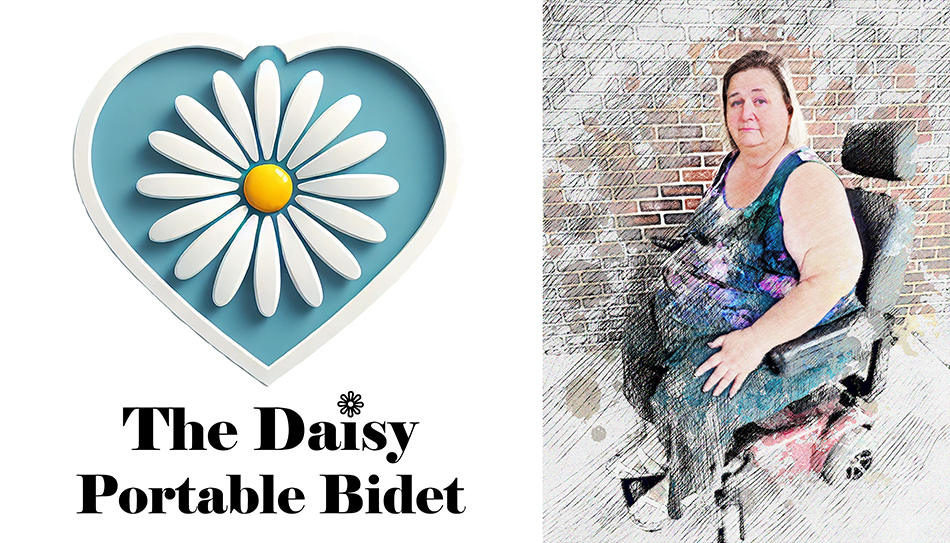The College of Engineering’s Senior Design Project is the culmination of an engineering student’s undergraduate journey. They spend months working with a team to put the concepts they’ve learned in class into a tangible, real-world project.
For Cybil Seneker, ENG ‘21, the potential impact of her senior design project, The Daisy Bidet, stuck with her. She wanted to see her project make a difference in the world.
When they first began their project, Seneker and her senior design team connected with Tara Cunningham, owner of Beyond-Impact, through Professor of Instruction Tom Edwards, DPS. Beyond-Impact equips organizations to become disability- and neuro-inclusive by transforming HR, and workplace culture through practical, skills-based strategies rooted in the biopsychosocial model of disability.
Cunningham presented Seneker and her peers with an issue she’d noticed and discussed with some of her connections: the lack of accessibility in public restrooms.
Many disabled individuals cannot use public restrooms without assistance, greatly limiting their overall autonomy to live and work in the community.
Cunningham connected them with Cheri Mitchell, a wheelchair user, who gave the team insight into the different problems she faced using public restrooms. From their conversations with Mitchell, alongside other research, the first concept of the Daisy Bidet was born.
In the current market there are three types of bidets: freestanding, attachment and portable.
Portable bidets range in design, but typically all require the user to squeeze a bottle with their hands, a task that can be difficult or impossible for someone with a physical disability. While an attachment bidet is more user-friendly, it lacks portability.
The Daisy Bidet combines aspects of both portable and attachment bidet types to create a portable bidet designed for disabled individuals to use public restrooms with autonomy.
The largest portion of the Daisy Bidet is the water reservoir and mechanical housing at about nine inches long and five inches wide, approximately the size of a water bottle. This can be clipped to the side of the toilet bowl underneath the toilet seat, so it doesn’t prevent wheelchair users from transferring themselves to the seat. The attached mechanical arm and nozzle are positioned in the toilet bowl above the water, ready for use with the click of a button.
Now, more than four years after completing her senior design project and graduating, Seneker continues to meet weekly with Cunningham, Mitchell and Edwards. With the provisional patent filed, the team is actively working toward securing a full patent and bringing the Daisy Bidet to market.
The group entered Temple’s Be Your Own Boss Bowl for the second year in a row, and this year won the Access and Opportunity Award.
In addition to the opportunity for funding, the Be Your Own Boss Bowl provides guidance towards developing a business model, an experience Seneker found incredibly beneficial with her goal of eventually taking the Daisy Bidet to market.
While the Daisy Bidet is her current focus, Seneker hopes the company she’s developed with Cunningham, Mitchell and Edwards can eventually exist as a design engineering team creating disability led solutions. Her interviews with these groups opened her eyes to the daily barriers and challenges often faced by the disabled community.
“We’ve conducted extensive research and interviews with people across a range of disabilities – from blindness to quadriplegia, cerebral palsy, and age-related mobility challenges. Across the board, one message was clear: the ability to maintain bodily autonomy and dignity is what matters most.” Seneker shares, explaining her main motivation for her engineering career path.
For now, the four are waiting to hear back from the United States Patent and Trademark Office, with the plan to then speak to design companies who could manufacture the product.

